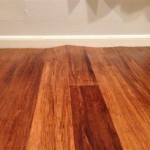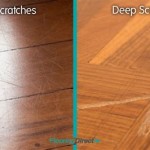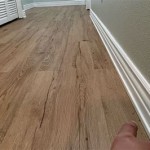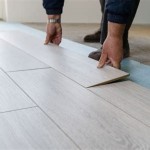Asbestos Vinyl Flooring Removal: A Guide to Safe and Effective Removal
Asbestos vinyl flooring, once a popular choice for its durability and affordability, has become a significant health hazard. The presence of asbestos in this type of flooring poses a serious threat to human health, as inhaled asbestos fibers can cause various respiratory diseases, including lung cancer. Therefore, the removal of asbestos vinyl flooring must be undertaken with utmost care and professionalism to minimize the risk of exposure and protect both the homeowners and workers involved. This article will provide a comprehensive guide on the safe and effective removal of asbestos vinyl flooring.
Understanding the Risks
Asbestos, a naturally occurring mineral, was widely used in various building materials due to its fire-resistant and insulating properties. However, its use has been curtailed due to its carcinogenic nature. When asbestos fibers become airborne, they can be easily inhaled and lodge deep within the lungs, causing significant health problems. Individuals exposed to asbestos may develop various illnesses, including asbestosis, mesothelioma, and lung cancer. The severity of these illnesses depends on the duration and intensity of exposure to asbestos fibers.
Professional Removal: The Importance of Expertise
Due to the health risks associated with asbestos, it is crucial to engage professional asbestos removal specialists for any asbestos-containing material removal. These professionals are trained and equipped to handle asbestos safely and effectively. They have the necessary expertise to properly identify asbestos materials, assess the risk level, and implement the appropriate removal techniques. Furthermore, they possess the required personal protective equipment (PPE) and follow strict safety protocols to minimize exposure to asbestos fibers during the removal process.
Steps Involved in Asbestos Vinyl Flooring Removal
The removal of asbestos vinyl flooring involves a systematic approach that prioritizes safety and minimizes the risk of exposure. The process typically includes the following steps:
1. Assessment and Preparation
The first step involves a thorough assessment of the flooring to confirm the presence of asbestos. This can be done through visual inspection or by obtaining an accredited laboratory analysis of the material. Once asbestos is confirmed, the area will be sealed off to prevent the spread of asbestos fibers. This involves using plastic sheeting, duct tape, and negative air pressure machines to create a contained environment.
2. Removal of Flooring
The actual removal of the asbestos vinyl flooring is a delicate process requiring specialized techniques to prevent the release of fibers. Depending on the condition of the flooring, professionals may use a variety of methods, including:
-
Encapsulation:
This technique involves covering the asbestos flooring with a sealant to prevent the release of fibers. This method is suitable for areas where complete removal is impractical. -
Wet Removal:
This involves using water to dampen the flooring during removal, limiting the spread of asbestos fibers. The flooring is then carefully removed in small sections. This method is considered safer than dry removal. -
Dry Removal:
This technique involves removing the flooring in a dry state, minimizing the use of water. It requires extra caution and proper ventilation to ensure safe removal. This method is generally avoided unless absolutely necessary.
3. Disposal and Cleaning
Once the asbestos vinyl flooring has been removed, it must be disposed of properly to prevent contamination. The materials are typically wrapped in double layers of heavy-duty plastic and labeled as asbestos waste. This waste is then transported to a licensed asbestos disposal facility for safe disposal. Following the removal, the area must be thoroughly cleaned using HEPA-filtered vacuums and wet mopping to remove any residual asbestos fibers. The cleaning process is crucial to ensure no asbestos fibers remain in the environment.
Safety Precautions for Homeowners
While professional asbestos removal is strongly recommended, homeowners should be aware of certain precautions when dealing with asbestos-containing materials. These include:
-
Do not attempt DIY removal:
Asbestos removal is a complex and potentially dangerous process. Homeowners should never attempt to remove asbestos flooring themselves. -
Avoid disturbing asbestos materials:
Minimize disturbance of asbestos flooring to prevent the release of fibers into the air. Avoid sanding or scraping the flooring, and do not use a vacuum cleaner that is not equipped with a HEPA filter. -
Keep children and pets away:
Children and pets are particularly vulnerable to asbestos exposure. Ensure they are kept away from areas containing asbestos materials. -
Consult a professional:
If you suspect the presence of asbestos in your home, contact a qualified asbestos inspector or removal specialist for evaluation and professional advice.

Asbestos Floor Tile Is It Safe To Remove On Your Own

Asbestos Floor Tile Removal Cost Guide For 2024

Asbestos Floor Removal Cost Rapid Removals

Asbestos Floor Tile Removal Vinyl Thermoplastic And Bitumin

The Truth About Asbestos Vinyl Flooring Chemcare

Asbestos Felt Dangerous In Roofing Flooring Paper Mills

How To Remove Vinyl Flooring The Home Depot

Asbestos Bitumen Glue Adhesive Removal Cost Guide For 2024

Asbestos Regulations And What You Need To Know

Need Asbestos Floor Tile Removal Request A Free Quote
Related Posts








